
10 minute read
Racism Defined
WHAT IS RACISM?
by Dismantling Racism Works
Advertisement
The definition of racism offered here is grounded in Critical Race Theory, a movement started in the 1970s by activists and scholars committed to the study and transformation of traditional relationships of race to racism and power. CRT was initially grounded in the law and has since expanded to other fields. CRT also has an activist dimension because it not only tries to understand our situation but to change it. The basic beliefs of CRT are:
1. Racism is ordinary, the “normal” way that society does business, the “common, everyday” experience of most People of Color in this country.
2. Racism serves the interests of both white people in power (the elites) materially and working-class white people psychically, and therefore neither group has much incentive to fight it.
3. Race and races are social and political constructs, categories that society invents and manipulates when convenient. In reality our differences as human beings are dwarfed by what we have in common and have little or nothing to do with personality, intelligence, and morality.
4. Society chooses to ignore this and assigns characteristics to whole groups of people in order to advance the idea of race and the superiority of whiteness.
5. The power elite racializes different groups at different times to achieve their economic agenda, continually and repeatedly prioritizing profit over people.
- Douglas A. Blackmon
RACISM DEFINED
PREJUDICE
An attitude based on limited information, often on stereotypes. Prejudice is usually, but not always, negative. Positive and negative prejudices alike, especially when directed toward oppressed people, are damaging because they deny the individuality of the person. In some cases, the prejudices of oppressed people (“you can’t trust the police”) are necessary for survival. No one is free of prejudice.
Examples: Women are emotional. Asians are good at math.
OPPRESSION
The systematic subjugation of one social group by a more powerful social group for the social, economic, and political benefit of the more powerful social group. Rita Hardiman and Bailey Jackson state that oppression exists when the following 4 conditions are found: • the oppressor group has the power to define reality for themselves and others, • the target groups take in and internalize the negative messages about them and end up cooperating with the oppressors (thinking and acting like them), • genocide, harassment, and discrimination are systematic and institutionalized, so that individuals are not necessary to keep it going, and, • members of both the oppressor and target groups are socialized to play their roles as normal and correct.
Oppression = Power + Prejudice
SOCIAL and INSTITUTIONAL POWER
• access to resources
• the ability to influence others • access to decision-makers to get what you want done
• the ability to define reality for yourself and others
SYSTEM
• an interlocking set of parts that together make a whole
• an established way of doing something, such that things get done that way regularly and are assumed to be the ‘normal’ way things get done
• runs by itself; does not require planning or initiative by a person or group
ADVANTAGE
• a leg up, a gain, a benefit
WHITE SUPREMACY
The idea (ideology) that white people and the ideas, thoughts, beliefs, and actions of white people are superior to People of Color and their ideas, thoughts, beliefs, and actions. While most people associate white supremacy with extremist groups like the Ku Klux Klan and the neo-Nazis, white supremacy is ever present in our institutional and cultural assumptions that assign value, morality, goodness, and humanity to the white group while casting people and communities of color as worthless (worth less), immoral, bad, and inhuman and “undeserving.” Drawing from critical race theory, the term “white supremacy” also refers to a political or socio-economic system where white people enjoy structural advantage and rights that other racial and ethnic groups do not, both at a collective and an individual level.
RACE
• Race is a social and political concept, not a scientific one.
• Even though this is true, race is a powerful political, social, and economic force. Race was and is constructed for social and political purposes, in large part to divide and conquer poor and working white people from poor and working People and Communities of Color.
• The term ‘white’ was constructed to unite certain European groups living in the U.S. who were fighting each other and at the same time were a numerical minority in comparison to the numbers of African slaves and Native peoples.
• In order to justify the idea of a white race, every institution in this country was and is used to prove that race exists and to promote the idea that the white race is at the top of the racial hierarchy and all other races are below, with the Black race on the bottom. All institutions were and are used to promote the idea of white supremacy.
• All European immigrants did not and do not become white at the same time (Irish, Italians, Jews). Becoming white involves giving up parts of your original culture in order to get the advantages and privileges of belonging to the white group.
• This process continues today.
RACISM
• Racism = race prejudice + social and institutional power
• Racism = a system of advantage based on race
• Racism = a system of oppression based on race
• Racism = a white supremacy system
Racism is different from racial prejudice, hatred, or discrimination. Racism involves one group having the power to carry out systematic discrimination through the institutional policies and practices of the society and by shaping the cultural beliefs and values that support those racist policies and practices.
Cycle of Oppression Diagram
HOW OPPRESSION OPERATES:
Cycle of Oppression
In order for oppression (racism in this case) to flourish, we must:
• forget / pretend – the oppressed must forget what has happened to them historically and what is happening to them in their day to day lives in order to get through their lives and their day; the dominant group must never identify as white or as benefiting from white privilege; the dominant group must ‘forget’ about their membership in the white group; the dominant group must pretend that everything is OK now, that the problem was in the past
• lie – the oppressed must stop speaking the truth about their experience, both to themselves (to survive internally) and to others (to survive in the world); the dominant group must lie to themselves and each other about their role in oppression, positioning themselves as blameless, passive (I didn’t cause it), individual and not part of a bigger system, while ignoring the internal racist conditioning and tapes (I am not racist, I’m a good white person).
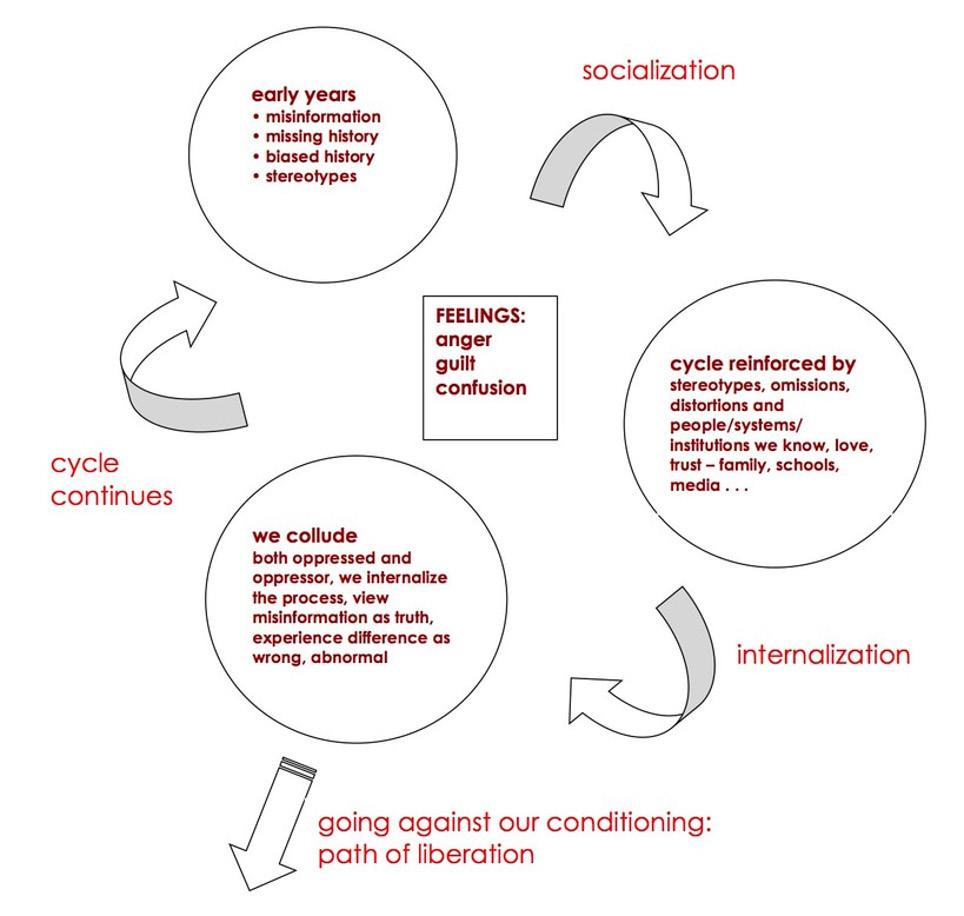
CYCLE OF OPPRESSION DIAGRAM
- Frederick Douglass
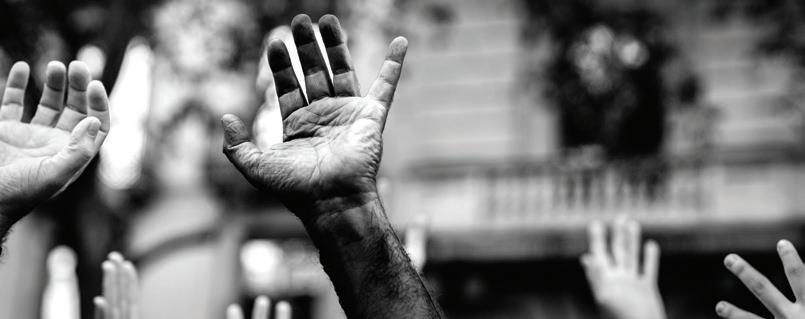
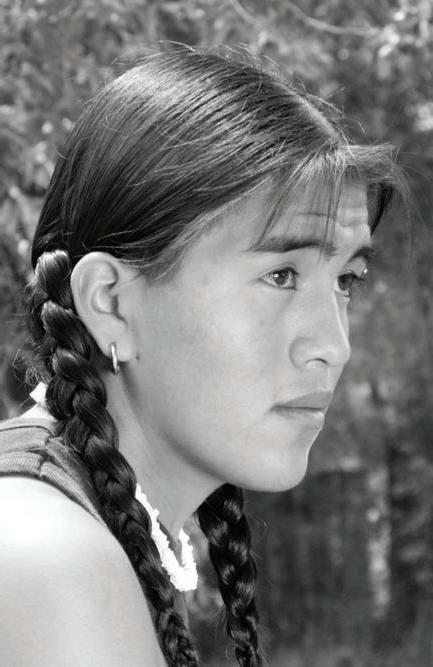
• stop feeling – the oppressed must cut themselves off from their feelings, become numb in order to survive, or feel that it is personal (I am bad or at fault); the dominant group must also cut themselves off from their feelings, insist on being ‘rational’ and ‘logical’ and never stop to feel the cost as oppressors; the dominant group must avoid feeling, because to begin feeling means to begin feeling guilt or shame.
• lose voice – the oppressed must internalize the oppression, feel bad about themselves and their situation so that they are no longer able to speak to it or about it, distrust their voice and the truth they have to speak; when the oppressed do speak out, they are labeled as ‘aggressive,’ ‘overly sensitive,’ ‘angry,’ and discounted; the dominant group becomes afraid to speak out because of the social pressure against it, the threat of losing family and friends, and separating themselves from the white group.
• make power invisible – the oppressed must begin to identify more with the dominant group than with their own group and as a result lose a sense of their collective power; the dominant group must assume their right to power along with the myth that power is individual and everyone who works hard can have the same power they do; or the dominant group must act as if they don’t have power as white people and deny the power that they get just by belonging to the white group.
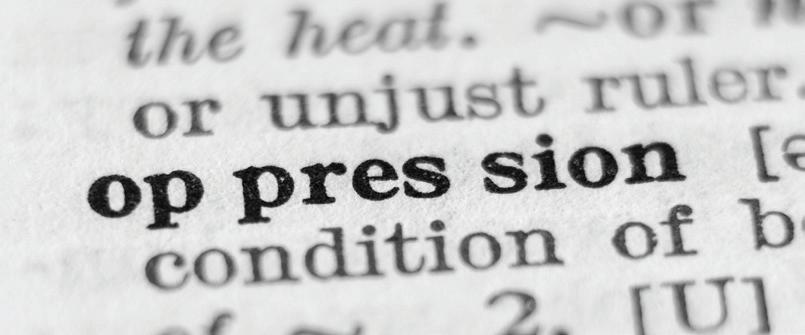
THREE EXPRESSIONS OF RACISM:
CULTURAL
The ways in which the dominant culture is founded upon and then defines and shapes norms, values, beliefs and standards to advantage white people and oppress people of color. The ways in which the dominant culture defines reality to advantage white people and oppress People of Color. The norms, values, or standards assumed by the dominant society that perpetuate racism. Examples: thin, blond, white women as the basis for our society's standard of beauty; women on welfare assumed to be Black or Brown and portrayed as irresponsible while white collar fraud in the business community is costing the US hundreds of billions of dollars a year; requiring people to speak English historically (Indigenous peoples) and today (people from Central and South America) as a way of deliberately destroying community and culture.
INSTITUTIONAL
The ways in which the structures, systems, policies, and procedures of institutions in the U.S. are founded upon and then promote, reproduce, and perpetuate advantages for white people and the oppression of People of Color. The ways in which institutions legislate and structure reality to advantage white people and oppress People of Color. The ways in which institutions – Housing, Government, Education, Media, Business, Health Care, Criminal Justice, Employment, Labor, Politics, Church – perpetuate racism. Examples: People of Color under-represented and misrepresented on television, racially biased standardized tests used to determine who will be admitted to higher education programs and institutions, historic and ongoing breaking of treaties with indigenous Native American communities, reliance on low-paying undocumented immigrant labor by farms and factories.
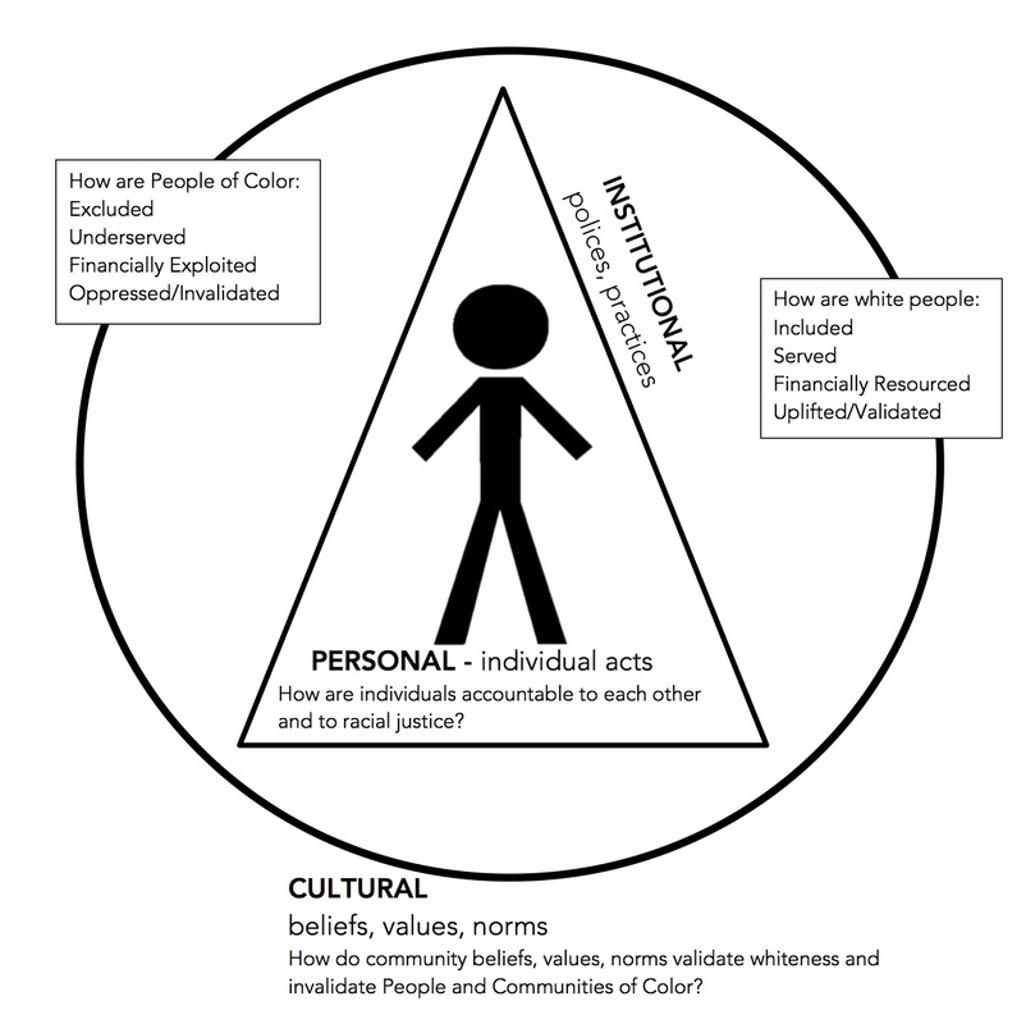
PERSONAL
The ways in which we perpetuate and/or assume the idea that white people are inherently better and/or People of Color are inherently inferior on an individual basis. The ways in which white people act out of racist implicit bias. Examples: calling someone a racist name, making a racist assumption.
This article was produced and published by Dismantling Racism Works. The article was published on the Dismantling Racism Works (dRWorks) website, which is a web-based version of a workbook designed originally to support the Dismantling Racism workshop.
The workshop was one step in a longer process developed initially by Kenneth Jones and Tema Okun over three decades ago. It builds on the work of many people, including (but not limited to) Andrea Ayvazian, Cynthia Brown, Bree Carlson, Beverly Daniel Tatum, Eli Dueker, Nancy Emond, Jonathan Henderson, Vivette Jeffries-Logan, Michelle Johnson, Jonn Lunsford, Jes Kelley, Sharon Martinas, Jona Olsson, Suzanne Plihcik, Christina Rivera-Chapman, David Rogers, James Williams, Sally Yee, as well as the work of the Peace Development Fund, Grassroots Leadership, Equity Institute Inc, the People’s Institute for Survival and Beyond, the Challenging White Supremacy workshop, the Lillie Allen Institute, the Western States Center, and the contributions of the many participants in the DR workshops over so many years. Visit the website at DismantlingRacism.org









